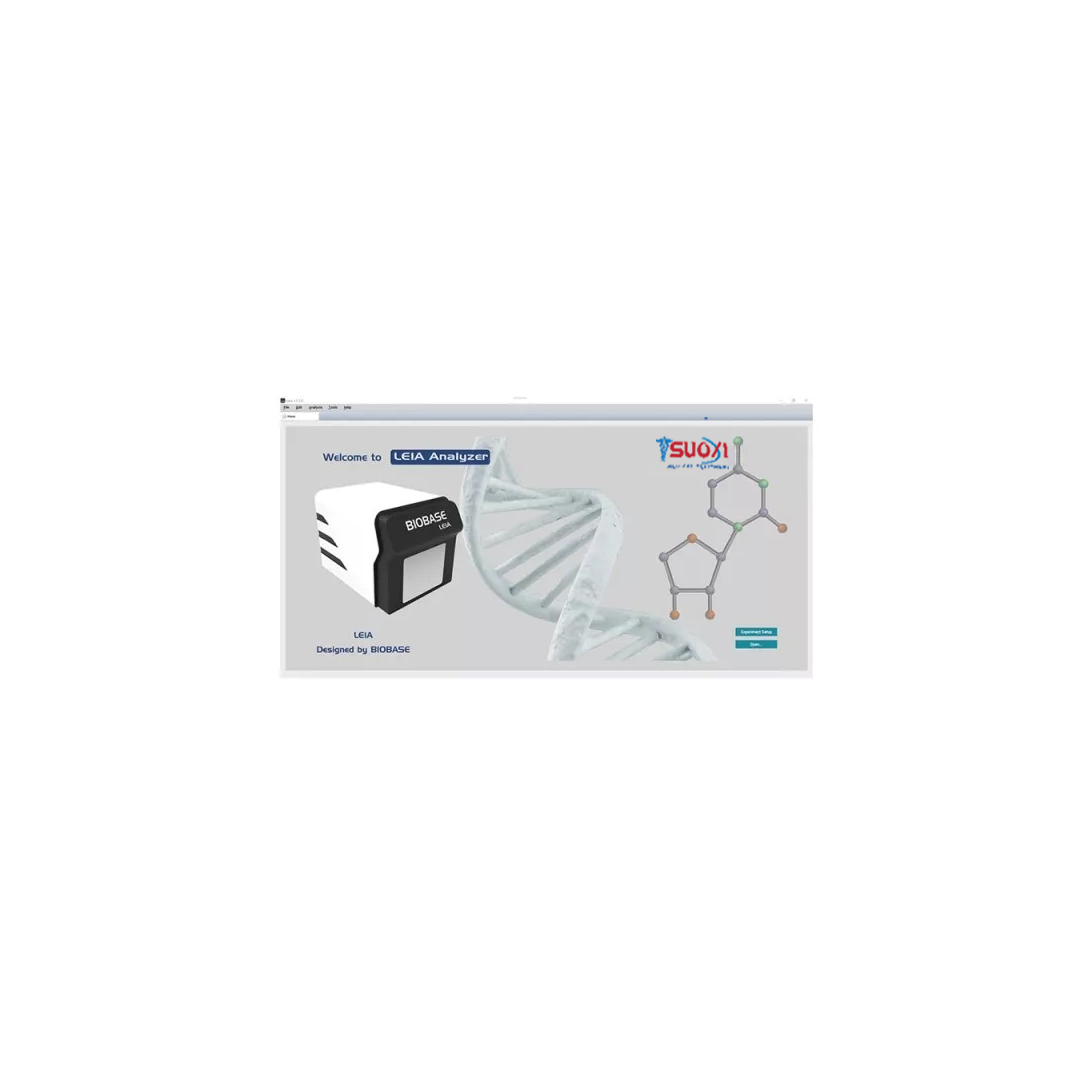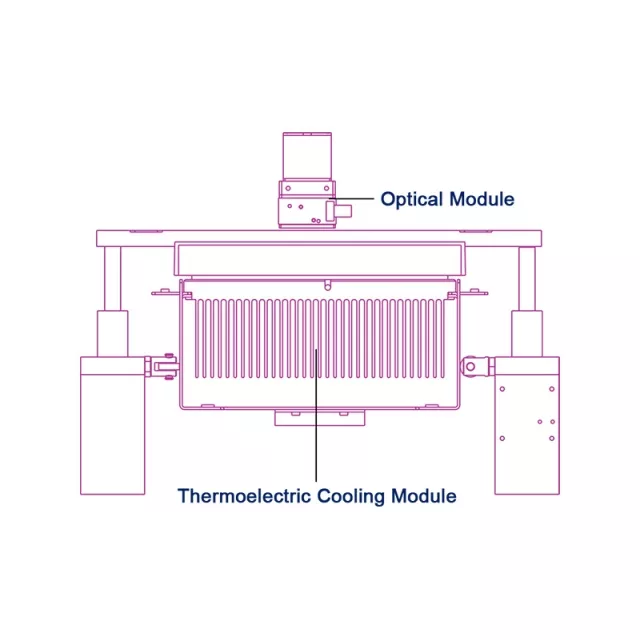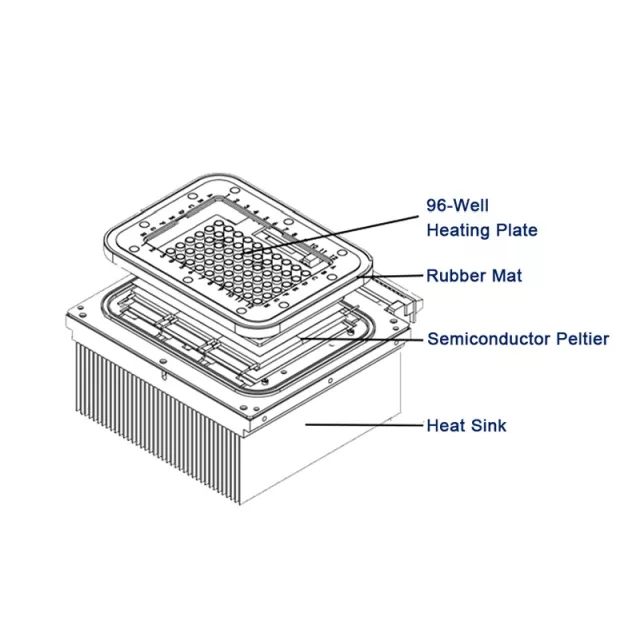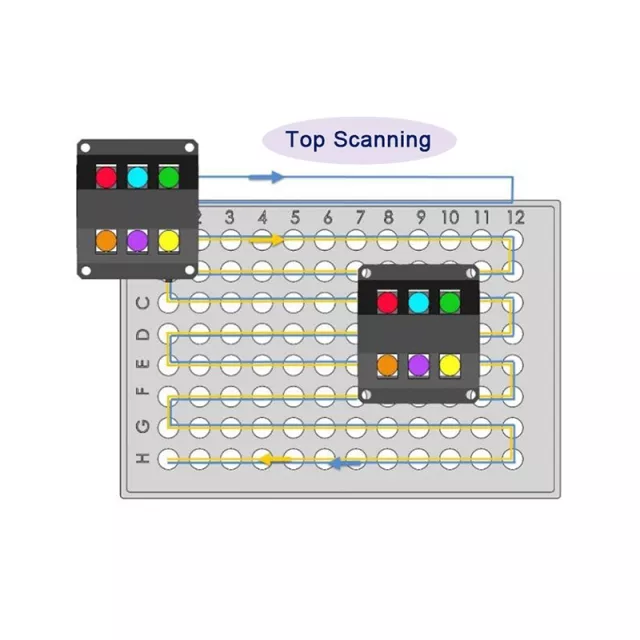Model No: SX25-FQDS-PCR96-LEIAX4
Real-Time Fluorescence Detection
The system measures fluorescence emitted during each PCR cycle, allowing for the real-time monitoring of the amplification process. The intensity of fluorescence increases as the target nucleic acid is amplified, which directly correlates with the quantity of the target in the sample.
Quantification of Nucleic Acids
Unlike traditional PCR, which only provides qualitative data (whether a target is present or not), qPCR provides quantitative data, determining the exact amount of DNA or RNA in a sample. This is achieved by measuring the cycle threshold (CT) value, the point at which fluorescence exceeds a predefined threshold, which inversely correlates with the initial quantity of the nucleic acid.
Multiplexing Capability
Many fluorescent quantitative PCR systems support multiplexing, meaning they can detect and quantify multiple targets simultaneously within the same reaction. This is achieved by using different fluorescent dyes or probes, each corresponding to a unique target sequence.
Fluorescent Dyes and Probes
The system uses a variety of fluorescent dyes and probes to monitor amplification:
-
SYBR Green: A dye that binds to double-stranded DNA and emits fluorescence.
-
TaqMan Probes: Sequence-specific probes that emit fluorescence after being cleaved during amplification.
-
Molecular Beacons and FRET Probes: These are other types of probes used for specific target detection.
High Sensitivity and Detection Limit
The system can detect very low amounts of nucleic acids, providing high sensitivity for applications that require detecting rare or low-abundance targets, such as pathogens or low-level gene expression.
Optical Detection System
The instrument features a highly sensitive optical detection system, including lasers and detectors, that capture the fluorescence signals emitted by the dyes or probes during amplification. The system may be equipped with multiple channels to detect different fluorescent signals from multiple targets at the same time.
Thermal Cycling
The system incorporates a thermal cycler capable of precise temperature control, facilitating the denaturation, annealing, and extension steps of the PCR process. The thermal cycler can achieve rapid temperature changes to maximize amplification efficiency.
Advanced Data Analysis Software
The system is typically integrated with sophisticated software that automatically analyzes the fluorescence data and calculates key parameters, such as the CT value (cycle threshold) and relative or absolute quantification. The software allows for the generation of:
It can also perform data normalization by comparing the expression of a target gene to a reference gene (housekeeping gene) to account for sample variability.
High Throughput and Multi-Sample Processing
Modern systems support high-throughput capabilities, enabling the simultaneous processing of many samples. They may include 96-well, 384-well, or even larger plate formats, allowing for the rapid analysis of large numbers of samples in parallel.
Temperature Uniformity and Gradient Capabilities
Some advanced systems include gradient thermal cycling, allowing different temperatures to be tested in different parts of the PCR plate in a single run. This is useful for optimizing PCR conditions for specific primers or probes.
Automated Workflow Integration
Many systems are designed to integrate seamlessly with other laboratory instruments, such as robotic liquid handlers, nucleic acid extractors, and laboratory information management systems (LIMS), creating a fully automated workflow for high-throughput research or clinical diagnostics.
Multi-Channel Detection
The system can detect multiple fluorescent signals simultaneously, allowing for the detection of multiple targets in a single reaction. This is particularly useful for gene expression studies or pathogen detection, where several genes or pathogens need to be quantified in the same sample.
Fast Cycling and High Efficiency
The system can perform PCR amplification in a faster and more efficient manner, with shorter cycling times compared to traditional methods, without compromising the sensitivity and accuracy of the results.
Low Sample and Reagent Consumption
qPCR systems are designed to minimize the amount of sample and reagents needed for each reaction. This helps to reduce costs, especially when working with precious or limited samples.
Built-In Quality Control and Validation
Many systems include features for built-in quality control, such as internal controls or reference genes, to validate the results and ensure the accuracy and consistency of the measurements.
Specification:
| Specification |
Details |
| Excitation Wavelength |
455 ~ 680 nm |
| Detection Wavelength |
510 ~ 730 nm |
| Fluorescence Detection Repeatability |
CV ≤ 2% |
| Fluorescence Detection Accuracy |
CV ≤ 3% |
| Fluorescence Detection Linearity |
r ≥ 0.995 |
| Module Temperature Range |
4 ~ 99℃ (Resolution: 0.1℃) |
| Ramp Rate |
5.0℃/s (Max) |
| Temperature Accuracy |
±0.3℃ |
| Temperature Uniformity |
≤ ±0.3℃ |
| Temperature Control Mode |
Block mode |
| Gradient Temperature Range |
1 ~ 36℃ |
| Hot-lid Temperature Range |
100℃, automatic hot-lid |
| Scanning Mode |
Full plate scanning |
| Programming |
Max 100 segments for each program, max 99 cycles |
| Operation Mode |
Continuous |
| Scanning Time |
8.5 s |
| Special Functions |
Absolute quantitative automatic analysis, relative quantification, SNP analysis, melting curve analysis, etc |
| Operating System |
Microsoft Windows 10 |
| Power Supply |
220V, 50/60Hz; 110V, 60Hz |
| Dimensions (L × W × H) |
375 × 490 × 365 mm |
| Port Method |
USB Port |
| Packing Size (L × W × H) |
645 × 565 × 605 mm |
| Gross Weight |
45 kg |








Reviews
There are no reviews yet.